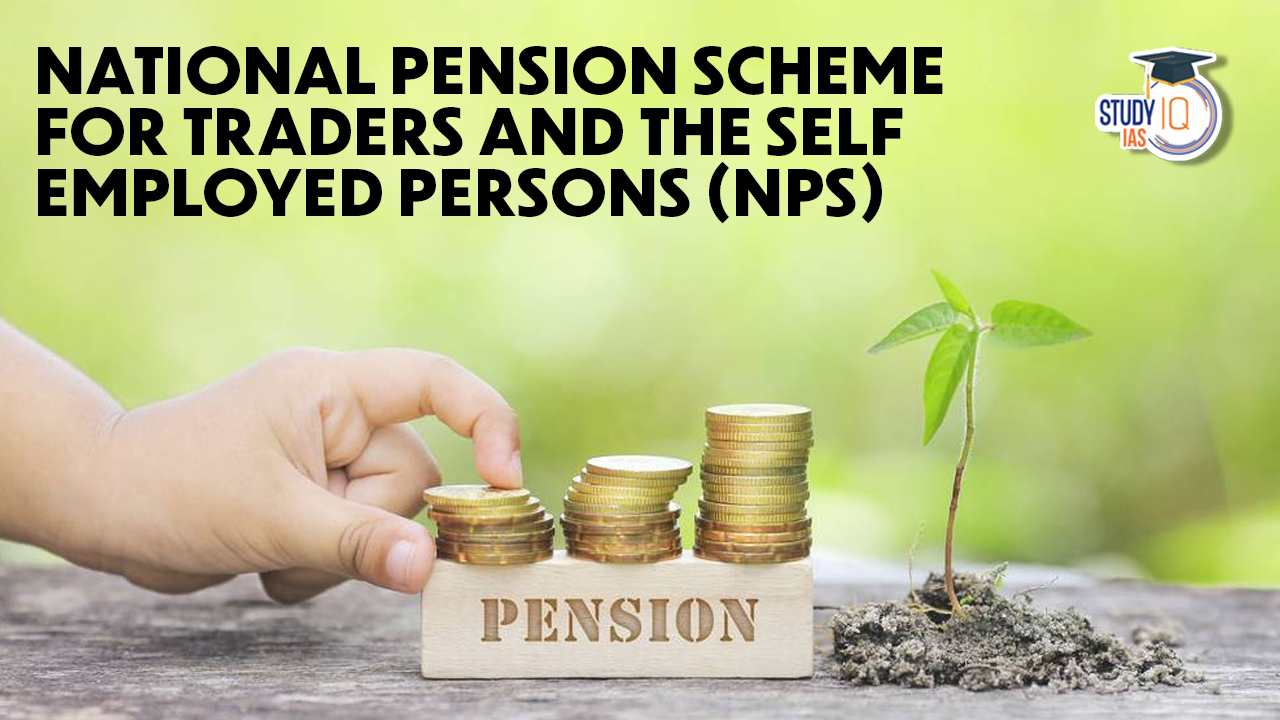Table of Contents
National Pension Scheme for Traders and The Self-employed Persons (NPS)
The Pradhan Mantri Laghu Vyapari Maan-dhan Yojana, also known as the National Pension Scheme for Traders and Self-Employed Persons, is a pension programme that offers shopkeepers, retail traders, and self-employed people a monthly minimum assured income of Rs. 3000. It is a central sector programme that is voluntary and contribution-based.
The programme will begin on July 22nd, 2019. More than 3 crore small retailers and traders would profit from the programme.
National Pension Scheme for Traders and The Self-employed Persons (NPS) Overview
It is a pension programme for Vyaparis, or shopkeepers, retail merchants, and independent contractors, whose annual sales does not exceed Rs 1.5 crore.
- It is a contributing, voluntary pension plan.
- The beneficiaries are not charged for enrollment in the programme.
- Self-certification is used to determine enrollment.
- On reaching the age of 60, it provides a provision for a minimum assured pension of Rs 3,000 per month.
- 50% of the monthly contribution will be provided by the central government, while the remaining 50% will come from the recipient.
Objective of National Pension Scheme for Traders and The Self-employed Persons (NPS)
By 2023–2024, this programme hopes to sign up 2 crore customers, up from 25 lakh in 2019–20. The pension plan is anticipated to provide benefits to the nation’s 3 crore Vyaparis.
Eligibility for National Pension Scheme for Traders and The Self-employed Persons (NPS)
- The programme is available to all Laghu Vyaparis, including those who are self-employed and operate as retail merchants, store owners, rice mill owners, oil mill owners, workshop owners, commission agents, real estate brokers, and proprietors of small hotels and restaurants. These small traders’ activities are typically characterised by family-owned businesses, modest scales of operations, labor-intensive nature, insufficient financial support, seasonal nature, and significant unpaid family work.
- Age range of 18 to 40
- Laghu Vyapari, whose self-declared annual revenue is not greater than Rs 1.5 crore. Only those with a revenue of more than Rs. 40 lakhs are obliged to have a GSTIN.
- Somebody has an Aadhar number and a savings account in their name.
- The following individuals cannot enrol in the Scheme – If covered by the Central Government’s National Pension Scheme, the Employees’ State Insurance Corporation Plan under the Employees’ State Insurance Act of 1948 (34 of 1948), or the Employees’ Provident Fund Plan under the Employees’ Provident Fund and Miscellaneous Provisions Act.
Benefits National Pension Scheme for Traders and The Self-employed Persons (NPS)
- After reaching the age of sixty, each qualified subscriber to this Scheme is guaranteed a minimum monthly pension of Rs. 3000.
- The Indian government would match the subscribers’ contributions in their accounts. For instance, if a 29-year-old individual contributes Rs. 100 each month, the Central
- Every month, the government additionally makes an equivalent subsidy contribution to the subscriber’s pension account.
- Benefits upon disability. If a qualified subscriber has made regular contributions and experiences a permanent disability before turning 60 years old,
- Benefits to the family upon the death of an eligible subscriber. – If an eligible subscriber passes away while receiving a pension, his or her spouse will only be eligible to receive 50% of the pension that subscriber had been receiving as a family pension, and this family pension will only apply to the spouse.
Pradhan Mantri Laghu Vyapari Mandhan Yojana Implementation
A pension fund will be established by the government to carry out the plan. The pension fund management will be the Life Insurance Corporation of India (LIC). LIC will be in charge of overseeing central recordkeeping, managing the pension fund, and paying out pensions.


 Repo Rate and Reverse Repo Rate, Impact ...
Repo Rate and Reverse Repo Rate, Impact ...
 Foreign Contribution Regulation Act (FCR...
Foreign Contribution Regulation Act (FCR...
 Urban Cooperative Banks in India, Functi...
Urban Cooperative Banks in India, Functi...





















